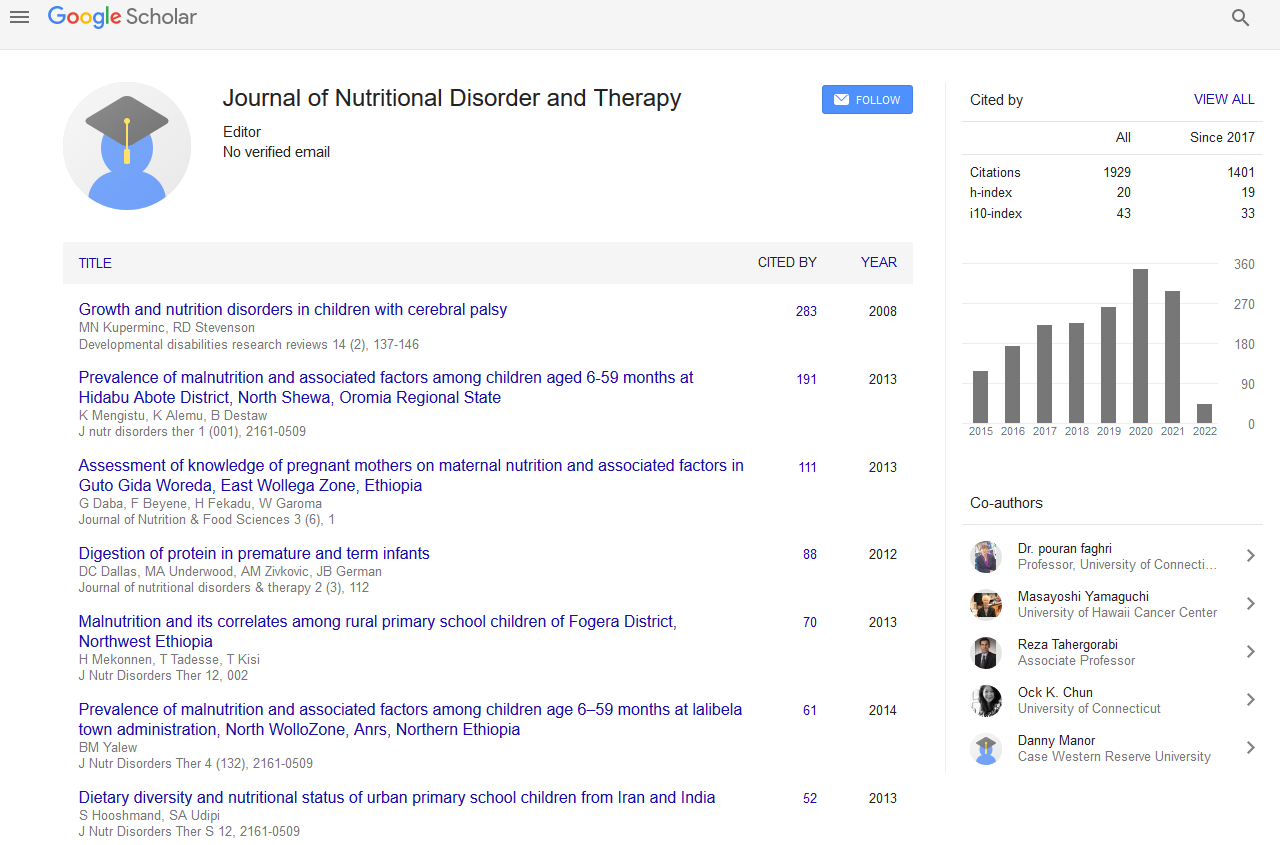Indexed In
- Open J Gate
- Genamics JournalSeek
- Academic Keys
- JournalTOCs
- Ulrich's Periodicals Directory
- RefSeek
- Hamdard University
- EBSCO A-Z
- OCLC- WorldCat
- Publons
- Geneva Foundation for Medical Education and Research
- Euro Pub
Useful Links
Share This Page
Journal Flyer

Open Access Journals
- Agri and Aquaculture
- Biochemistry
- Bioinformatics & Systems Biology
- Business & Management
- Chemistry
- Clinical Sciences
- Engineering
- Food & Nutrition
- General Science
- Genetics & Molecular Biology
- Immunology & Microbiology
- Medical Sciences
- Neuroscience & Psychology
- Nursing & Health Care
- Pharmaceutical Sciences
Intrauterine Growth Restriction (IUGR): a serotonergic neuropathologic picture in experimental animals and human infants
JOINT EVENT: 13th International Congress on Advances in Natural Medicines Nutraceuticals & Neurocognition & 14th International Conference on Clinical Nutrition
July 27-29, 2017 Rome, Italy
Jorge Hernandez�??Rodriqguez and Gabriel Manjarreez�??Gutierrez
Medicine University of Querétaro, México
National Institute of Social Security, México
Posters & Accepted Abstracts: J Nutr Disorders Ther
Abstract:
In our lab, we evaluated if the free plasma fraction of L-Tryptophan (FFT) and the N1/P2 component of the auditory evoked potentials (AEP) were associated with impaired brain serotonin neurotransmission in infant rats and humans with IUGR. FFT, bound and total plasma L-Trp were measured and the AEP�??s, in a prospective, longitudinal and comparative study, comparing IUGR and control infants. Results showed that the FFT was increased and the amplitude of the N1/P2 component of AEP was significantly decreased in IUGR relative to control infants. FFT and the N1/P2 component had a negative association. We concluded that in newborns with IUGR, the changes in measured FFT and in the amplitude of N1/P2 component of AEP, suggest an inverse association between FFT and the N1/P2 component of AEP and that these changes observed may be causally related with brain serotonergic activity. In IUGR epigenetic factors such as nutritional stress induced disturbances in brain serotonin metabolism and in serotonergic activity, identifiable postnatally through alterations in AEP cortical responses, may have influenced brain cerebral sensory cortex development. These data allowed us to propose the presence of an impaired serotonergic transmission, installed very early in brain development and that might be also casually associated with brain serotonin-related disorders in adulthood.


